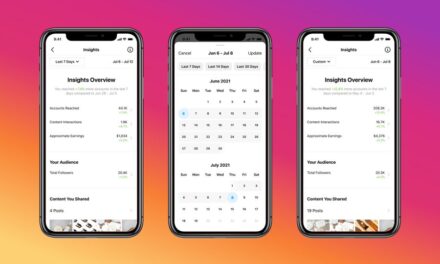By James Hercher
2018 was a momentous year for the world of data and advertising. The implementation of GDPR created vast ripples that have obscure digital audiences and create new demand for addressable media.
And even as ad tech companies embrace higher levels of transparency, every layer peeled reveals more auction tricks and data dealings, like bid caching and news that back in the day Rocket Fuel misused competitive client information.
These articles were among the most-read stories of the last year and document the major trends driving digital media and data-driven advertising.
Drawbridge Exits Media Business In Europe Before GDPR Storms The Castle
by James Hercher
Drawbridge shifting staff from London to New York City seems unimportant, but it was a canary in the coalmine for ad tech in Europe before GDPR.
Drawbridge abandoned its advertising business in Europe, as did other cross-device identity graphs like Tapad, because complying with GDPR would be too difficult and risky. They have no consumer relationship with which to get the necessary consent, which they’d need to get retroactively to house all the data already in their graphs.
“It’s too bad for Drawbridge, but the whole mar tech ecosystem is hurting from this,” one European DSP partner told AdExchanger about Drawbridge’s exit from the market. “Meanwhile, there’s Google and Facebook, running away.”
Google Sharply Limits DoubleClick ID Use, Citing GDPR
by Alison Weissbrot
In April, a month before GDPR came into effect, Google dropped a bombshell on its buyers with the news that the DoubleClick ID would no longer be available for cross-platform reporting and measurement.
Google will continue to allow marketers to use first-party data and Google data within its own marketing cloud product, Ads Data Hub, but the policy undercuts agencies and measurement and analytics companies, which need the Google ad ID because Google serves the majority of all online ads.
The policy is in effect in EU, where it was ostensibly created to address GDPR regulations. The original plan to enforce the policy worldwide by the end of the year has been pushed back to an unspecified time next year.
AppNexus Is No Longer Independent: How Will Its Clients React?
by Alison Weissbrot
When AT&T announced its acquisition of AppNexus in June, many players in data-driven advertising wondered how the new ownership would impact AppNexus’s client relationships.
“We entered into this partnership secure in the knowledge that AT&T is committed to maintaining a vibrant third-party ecosystem,” wrote AppNexus’s then-CEO, Brian O’Kelley, in a note to clients obtained by AdExchanger.
The buy-side perspective is cautiously optimistic about having another strong identity graph and increasing quality video inventory. Though companies that compete directly with AT&T and Time Warner may be disinclined to use AppNexus.
The sell side is a little more complicated, since AT&T could potentially siphon valuable data on media companies in its exchange. Rival broadcasters or video programmers are also more suspicious that the Xandr exchange will favor Time Warner media.
Index Exchange Called Out For Tweaking Its Auction
by Sarah Sluis
For more than a year Index Exchange used the practice of “bid caching,” where if an advertiser loses an auction, Index holds onto the bid to potentially use it on the next page where it identifies the same user.
The idea seems practical, since it ostensibly targets an impression to the right person at the right price. But real-time bids are expected to be, well, real time, and the follow-up site or article doesn’t necessarily have the same value.
“We didn’t think it was an issue with buyers. We were so surprised. We thought this was an industry practice,” said Drew Bradstock, SVP of product at Index Exchange.
Other SSPs responded that the policy was not common practice. They were also likely peeved because Index’s bid caching scandal doesn’t anger publishers, who earn more with bid caching on.
Can LiveRamp Go Beyond Advertising?
by Allison Schiff
LiveRamp pulled off a neat M&A pirouette in 2018: selling Acxiom Marketing Solutions (AMS) for $2.3 billion and relisting on the Nasdaq stock exchange as RAMP with two billion dollars in cash and an extra billion added to its market cap, despite AMS accounting for five-sixths of Acxiom’s overall revenue.
But the cash and valuation boosts come with pressure for rapid growth. And verticals like healthcare, financial services and government sectors have growing demand for non-marketing ID services.
“The fear over time is that if we don’t successfully expand, one of these companies from another sector is going to say, ‘Maybe we should get into marketing and advertising.’ So, LiveRamp has to be broader than we are now or we will invite the seeds of our own competition,” LiveRamp CEO Scott Howe told AdExchanger.
Amazon Tests Search-Based Retargeting, The First Time Its Search Data Leaves Its Walls
by James Hercher
Amazon has quietly tested and launched ad tech products like new video formats and pixel-based measurement. One of the notable tests begun by Amazon’s advertising platform business this year was for search-based retargeting.
The new search-based targeting – available only with Amazon’s DSP – is the first time that Amazon search data can be used off its owned and operated media. The beta program is tightly controlled, so agencies can’t use whitelists, blacklists or brand verification technology. But Amazon search data is compelling because it’s loaded with purchase intent and may allow brands to preempt traffic otherwise headed to competitors.
Amazon’s search-based retargeting tests also show how its historically siloed and competitive search, retargeting and Amazon Prime ad teams are being stitched into a holistic platform.
Who Will Buy Nielsen? A Few Possibilities
by Rae Paoletta
Nielsen had begun a strategic review to sell all or part of the company.
“All options are being weighed,” a Nielsen spokesperson told AdExchanger. And all options could mean anything, considering Nielsen spans the buy side and sell side, software and services, and different kinds of media.
So who could buy Nielsen? The usual suspects of Oracle, Salesforce and Adobe have to be in the mix. Nielsen’s data assets could make sense in Oracle Data Cloud (Moat is one of the startups competing with Nielsen on digital media verification and measurement). And Adobe has tried to buy and build its way into video advertising, like with the TubeMogul acquisition.
Rocket Fuel Powered Its AI By Mixing Client Data That Wasn’t Meant To Be Mixed
by Allison Schiff
Rocket Fuel’s rise and fall and eventual disappearance into Sizmek has been an important part of the overall story of ad tech. But one thing most people didn’t know was that during Rocket Fuel’s heyday as a black box programmatic machine, the company was also mingling data in ways that would have horrified some clients.
For instance, Rocket Fuel would use data from one automotive brand to benefit a different auto company.
As one media buyer put it to AdExchanger, “Yeah, it surprises me that this was happening, but does it anger me? Does bid caching anger me? More so, it just feels unfortunate. It should have been talked about. Something screwed up happens every day in this industry.”
Disney Drops FreeWheel In Favor Of Google Ad Manager
by Rae Paoletta
The fairy tale is over for Disney and FreeWheel, Comcast’s video ad server business.
Disney moved its video ad tech business from FreeWheel to Google in November, a major coup for Google as it tried to add more broadcast-quality content to its YouTube’s video pool.
A Disney spokesperson told AdExchanger the change wasn’t due to competitive concerns with Comcast, which had been in a contentious bidding war with Disney over 21st Century Fox for most of the year.
Disney is also one of the Google Cloud Platform’s marquee brand clients, alongside other media industry giants like 21st Century Fox and Netflix, so the video ad serving deal shows how sticky the cloud infrastructure relationship could be to transition entertainment studios to the Google ad tech stack.
Multimillion-Dollar Oops! Google Will Pay Publishers For ‘The Night Of The Yellow Ad’
by Sarah Sluis
For a 45-minute window at night on Tuesday, December 4th, publishers across Australia and the United States saw Google buying up mysterious banners, each a plain yellow block, at CPMs north of $20.
It turned out to be a customer training demo gone awry, but the high CPMs and apparent lack of an off switch meant the campaign spent millions of dollars, possibly more than $10 million, in the time it was live. Many publisher ad ops execs told AdExchanger they thought it would turn out to be fraud or invalid traffic, but Google said it would honor the spend.















